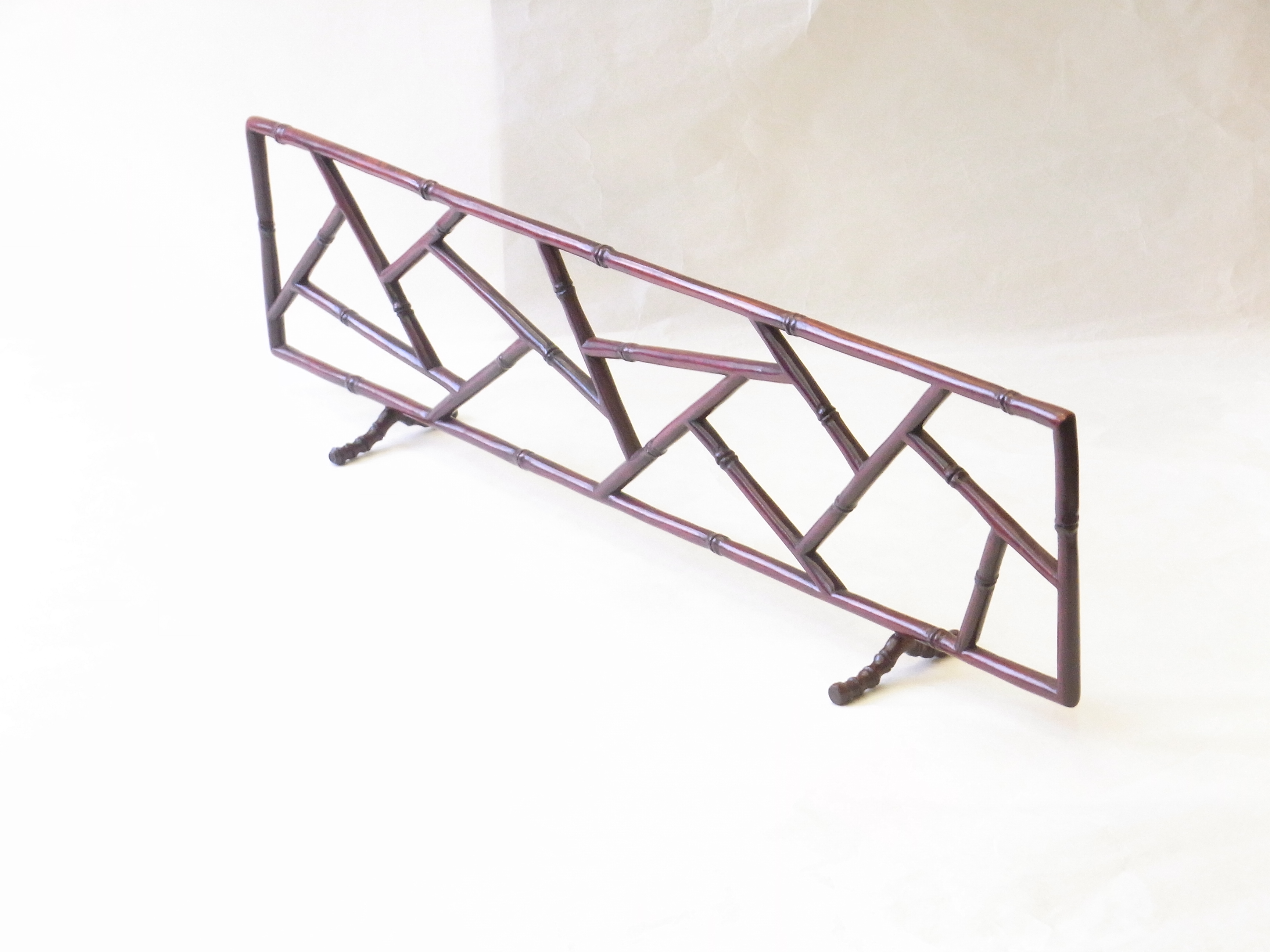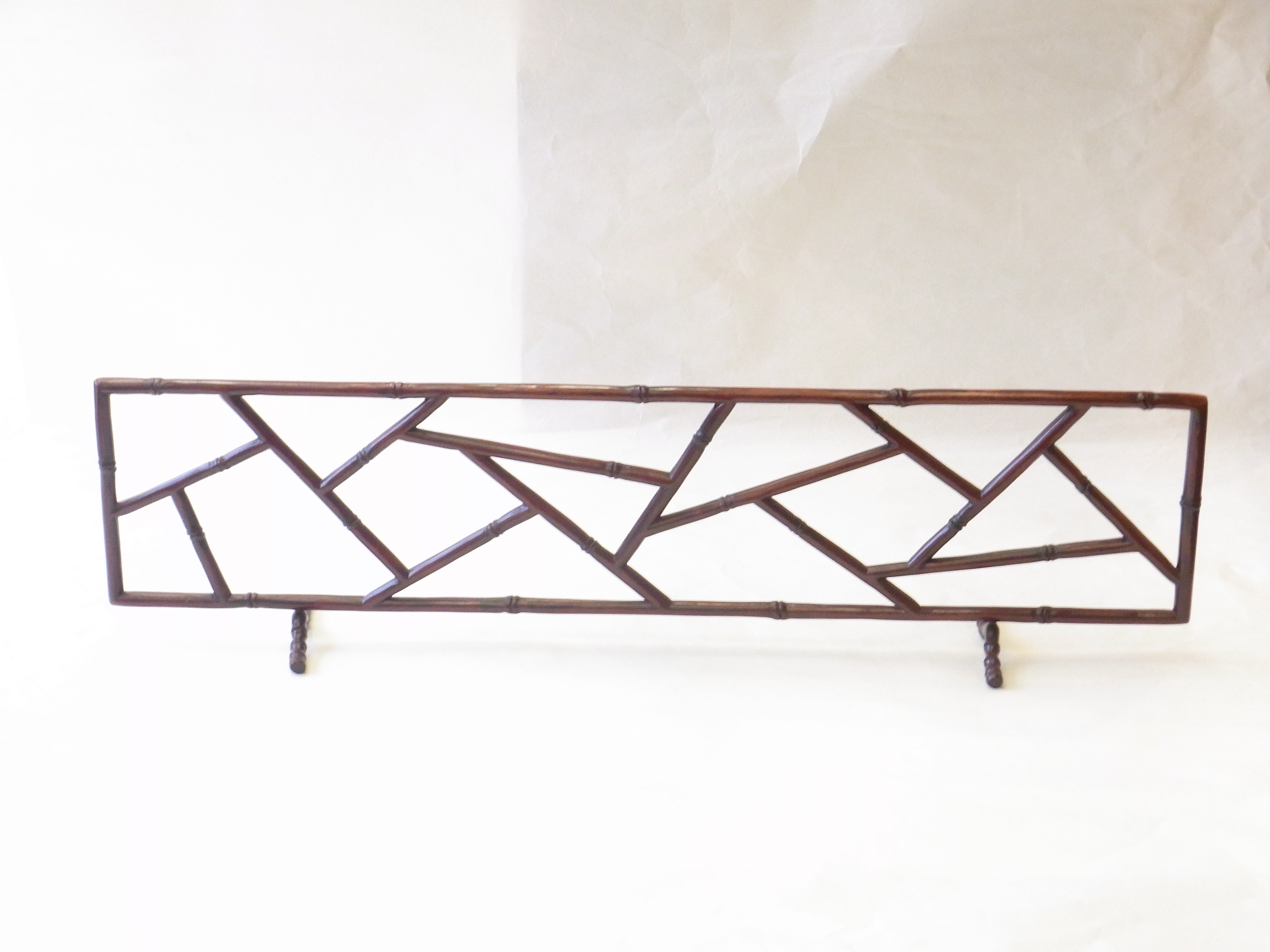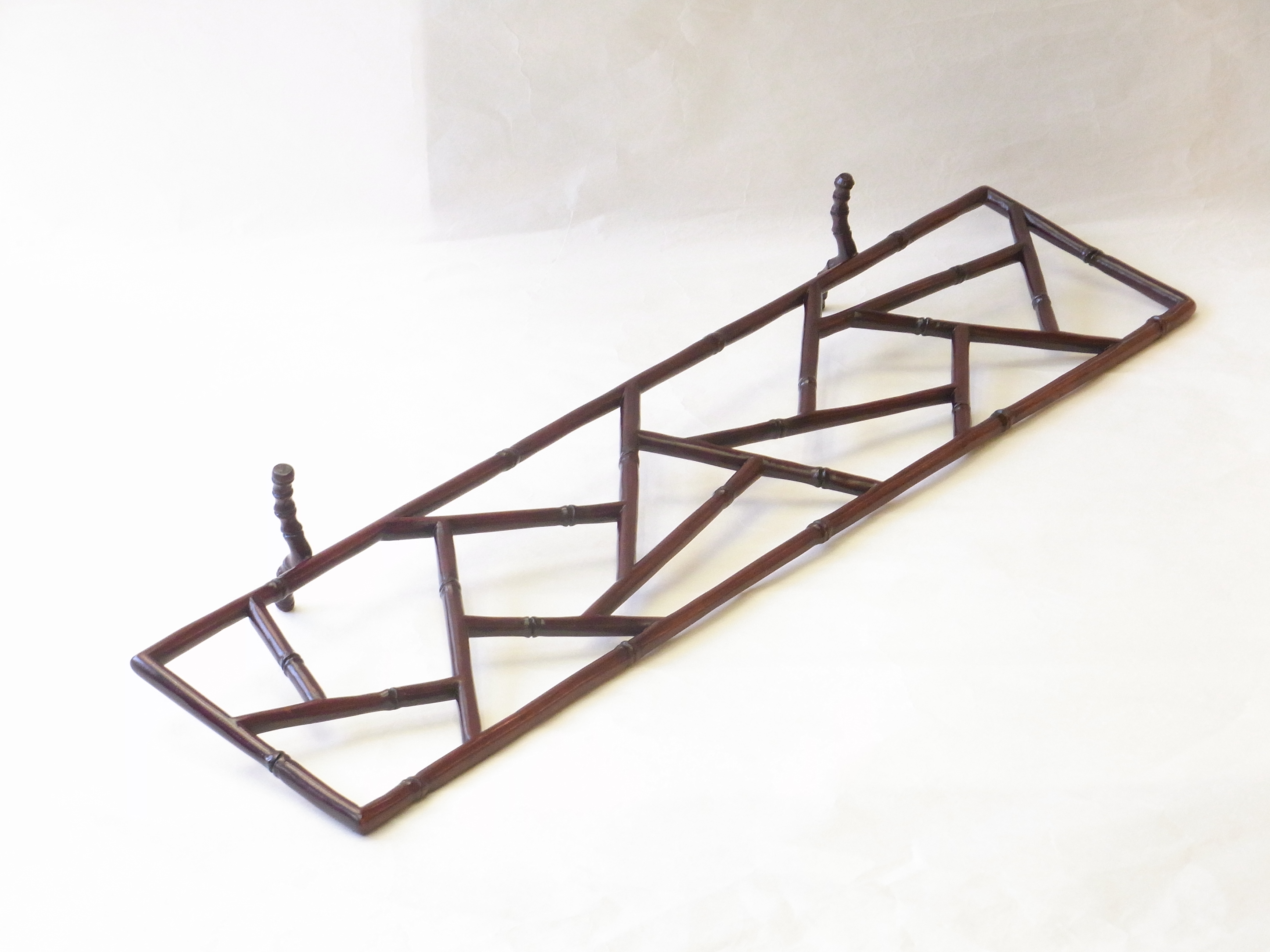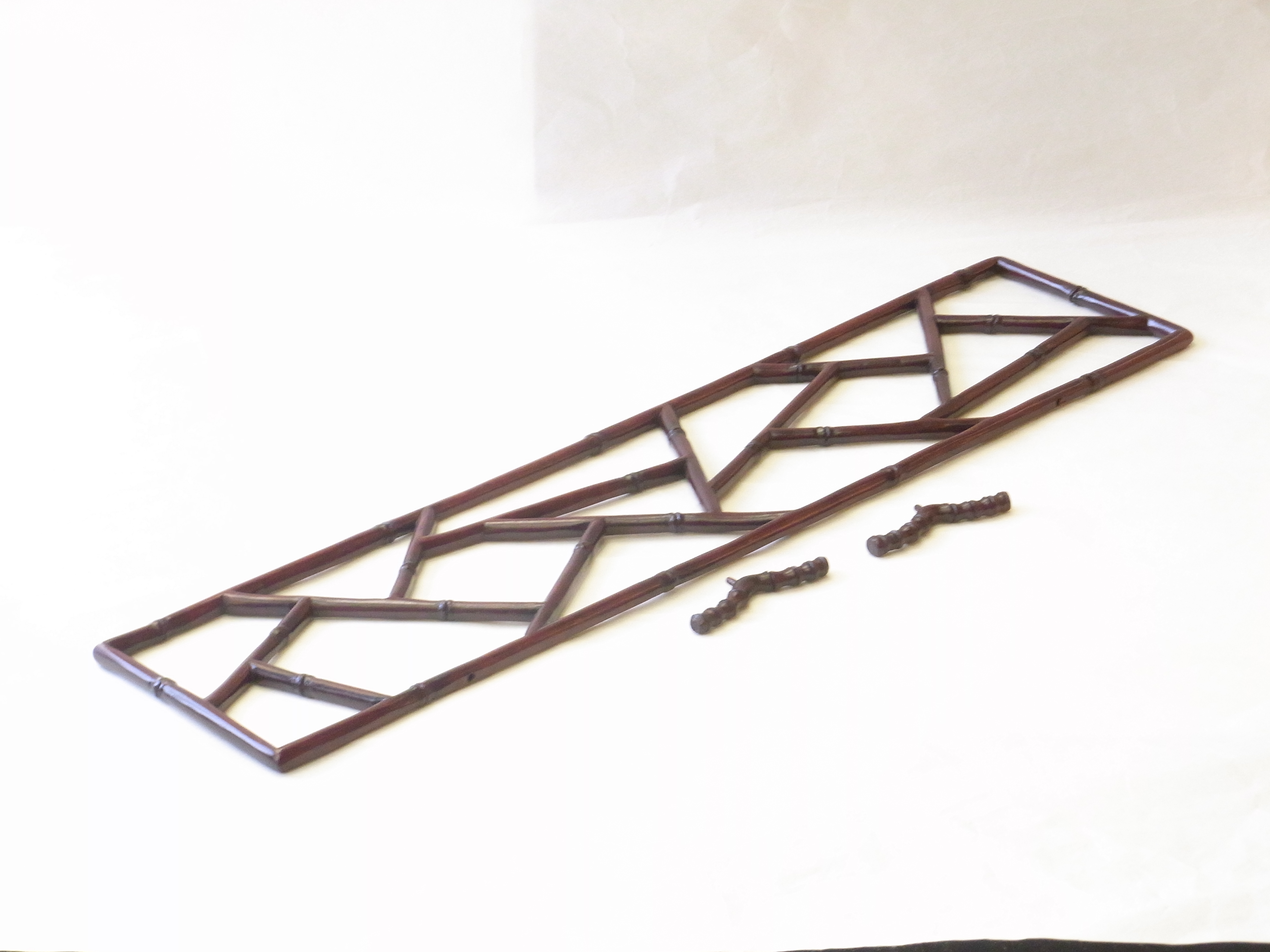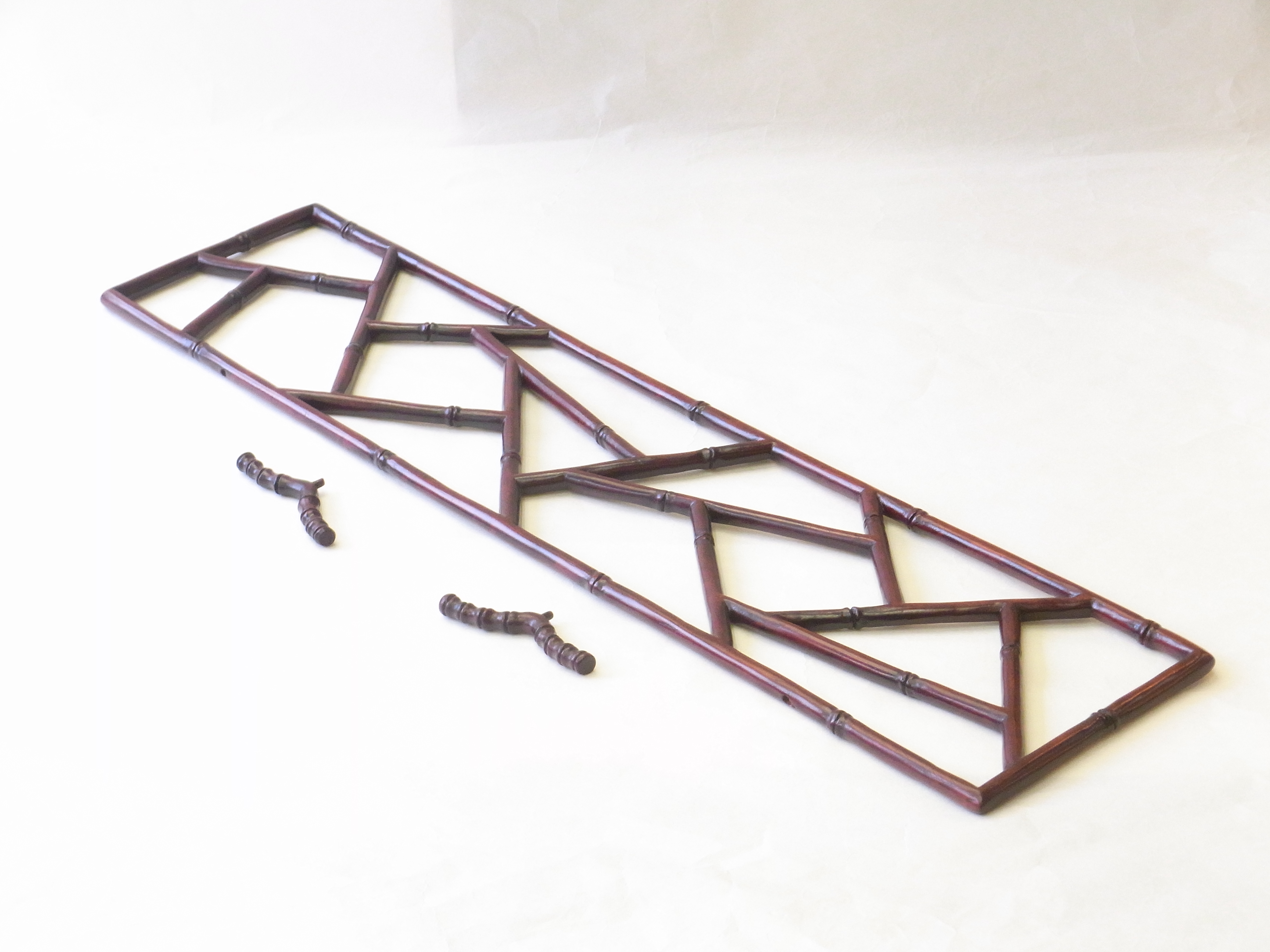紅木(こうぼく)の結界(けっかい)のご紹介です。
結界とは本来は仏教用語で、仏道修行のために僧尼の衣食住地に
境界や制限を設けることをいいます。
寺院の内陣と外陣の間や、僧俗の座席の境に設けた木柵をもいいます。
茶道や煎茶では風炉先屏風などの代用品として道具畳と客畳とを
仕切るのに用います。
座障とも座頂とも言います。
客との仕切りを設けることで、こちらを客と区別し、客を敬う気持ちから
作られたと考えられます。
この結界は一見すると、竹が組まれて作られているように見えますが
実は紅木(こうぼく)で作られています。
紅木とは良質の紫檀のことで、最高級の材質です。
竹の節のように彫りがなされています。
また、組み合わせて作られているように見えますが
四隅はもちろん、木と木が組み合わされているように見える部分には
接合した後が全くありません。
何とこれは、一枚の紅木の板をくり抜き、研ぎだして
作られていることが分かります。
大変な手間と技術が要される逸品です。
脚の部分はこれも竹のような細工がされていますが
収納を考えて、着脱式となっています。
煎茶以外でも、ちょっと仕切りを付けたい、結界を置くと落ち着くなど
普段の生活の中にも取り入れることができる調度品です。
全長 60㎝ 高さ 15.5㎝ 厚さ 1㎝
木製(紅木)
It is an introduction of the barrier of the red tree.
The barrier is originally a Buddhist term, and it is a place where monks, food, clothing, and shelter shokudo for Buddhist practice.
It is to establish boundaries and restrictions.
It also has a wooden fence between the inner and outer members of the temple and on the border of the monk’s seat.
In the tea ceremony and Sencha, as a substitute for wind furnace tipping screens, the tool tatami mats and the guest tatami mats
It is used to partition.
It is also called a seat trouble or a seat.
By setting up a partition with the customer, we distinguish this from the customer, and from the feeling of respecting the guest
It is thought that it was made.
At first glance, this barrier seems to be made of bamboo.
In fact, it is made of red wood.
Red wood is a high-quality purple persimmon, and it is the finest material.
It is carved like a bamboo section.
It also looks like it’s made in combination
Four corners, of course, in the part where the tree and the tree seem to be combined
There is no after joining.
What a piece of red wood board is cut out and sharpened!
I can see that it is made.
It is a gem that requires a lot of time and skill.
The part of the leg is also crafted like bamboo
Considering the storage, it has become detachable.
In addition to Sencha, I want to put a partition for a moment, and when I put a barrier, I settle down, etc.
It is a furnishing that can be incorporated into everyday life.
這是紅木的世界的介紹。
結界本質上是佛教術語,用於佛教修行的僧侶的衣食地
設定邊界和限制。
寺廟的內方和外院之間,以及僧侶座位之間的木柵欄。
在茶道和抹茶中,工具榻榻米和客折疊作為替代產品,如風爐前風
用於分區。
它也被稱為坐姿和坐姿。
通過設置與客戶的分區,我們將區分客戶,並尊重客戶。
它被認為是由。
乍一看,這個邊界似乎是由竹子製成的。
事實上,它是由紅木製成的。
紅木是優質紫羅蘭,是最好的材料。
雕刻像竹節一樣。
看起來也是組合的,但
四個角落,當然,樹木和樹木似乎結合在一起的部分
連接後根本不存在。
什麼,這拉出一塊紅木板,並銳化它
你可以看到它正在製造。
這是一個寶石,需要大量的時間和精力和技術。
腿的一部分也像竹子一樣製作。
考慮存儲,它已成為可拆卸的。
除了抹茶,我想分區一點點,當邊界被放置,定居等。
這是一個傢俱產品,可以納入在日常生活中。
这是红木的世界的介绍。
结界本质上是佛教术语,用于佛教修行的僧侣的衣食地
设定边界和限制。
寺庙的内方和外院之间,以及僧侣座位之间的木栅栏。
在茶道和抹茶中,工具榻榻米和客折叠作为替代产品,如风炉前风
用于分区。
它也被称为坐姿和坐姿。
通过设置与客户的分区,我们将区分客户,并尊重客户。
它被认为是由。
乍一看,这个边界似乎是由竹子制成的。
事实上,它是由红木制成的。
红木是优质紫罗兰,是最好的材料。
雕刻像竹节一样。
看起来也是组合的,但
四个角落,当然,树木和树木似乎结合在一起的部分
连接后根本不存在。
什么,这拉出一块红木板,并锐化它
你可以看到它正在制造。
这是一个宝石,需要大量的时间和精力和技术。
腿的一部分也像竹子一样制作。
考虑存储,它已成为可拆卸的。
除了抹茶,我想分区一点点,当边界被放置,定居等。
这是一个家具产品,可以纳入在日常生活中。
